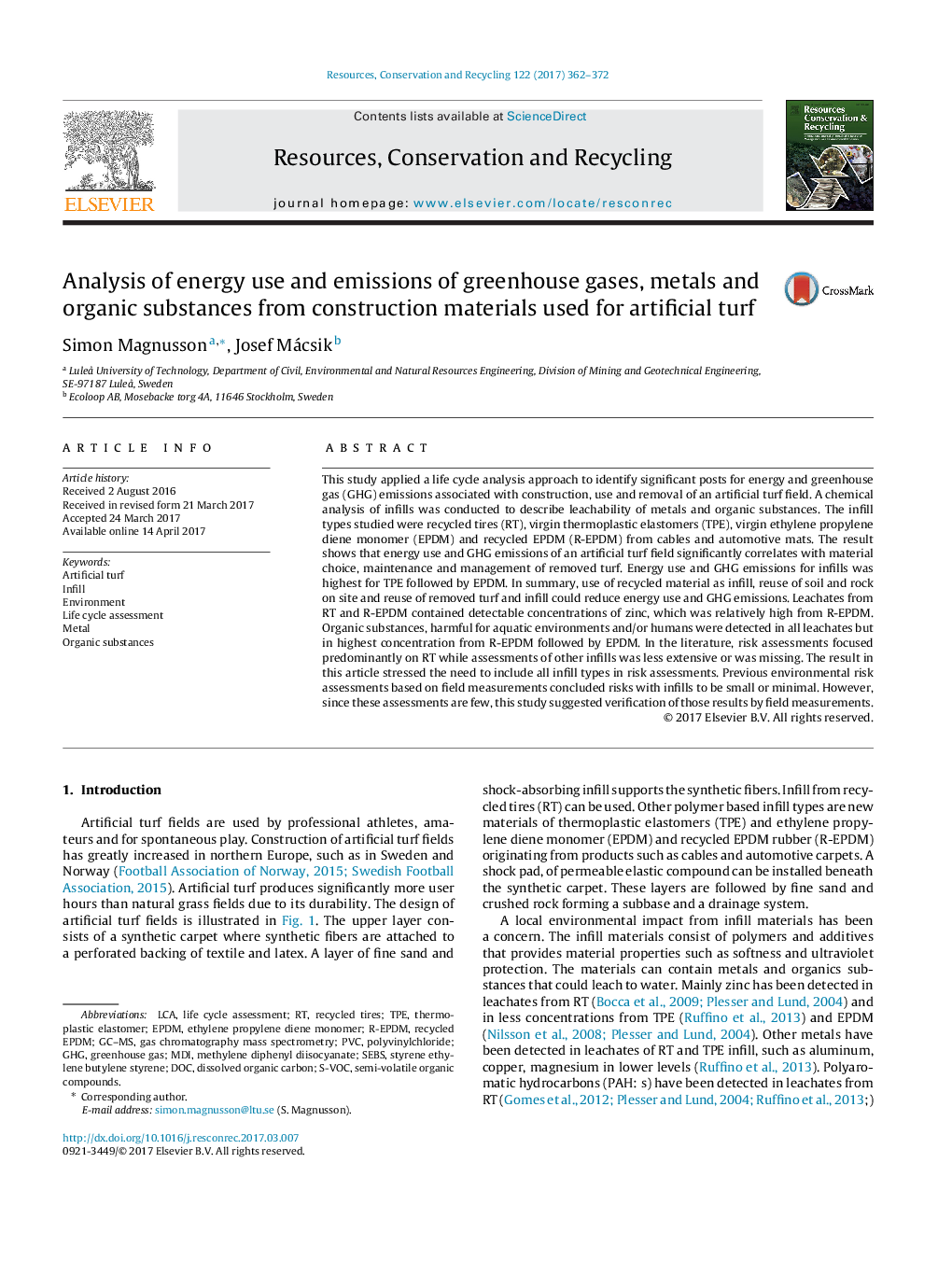| Article ID | Journal | Published Year | Pages | File Type |
|---|---|---|---|---|
| 5118806 | Resources, Conservation and Recycling | 2017 | 11 Pages |
â¢Analyzed energy use, CO2 emissions and leachates for artificial turf materials.â¢Material use and management are significant for energy use and CO2 performance.â¢Infill of recycled material reduce artificial turf's energy use and climate impact.â¢Harmful substances may leach to water from infill of both new and recycled material.â¢All infill types should be included in risk assessments.
This study applied a life cycle analysis approach to identify significant posts for energy and greenhouse gas (GHG) emissions associated with construction, use and removal of an artificial turf field. A chemical analysis of infills was conducted to describe leachability of metals and organic substances. The infill types studied were recycled tires (RT), virgin thermoplastic elastomers (TPE), virgin ethylene propylene diene monomer (EPDM) and recycled EPDM (R-EPDM) from cables and automotive mats. The result shows that energy use and GHG emissions of an artificial turf field significantly correlates with material choice, maintenance and management of removed turf. Energy use and GHG emissions for infills was highest for TPE followed by EPDM. In summary, use of recycled material as infill, reuse of soil and rock on site and reuse of removed turf and infill could reduce energy use and GHG emissions. Leachates from RT and R-EPDM contained detectable concentrations of zinc, which was relatively high from R-EPDM. Organic substances, harmful for aquatic environments and/or humans were detected in all leachates but in highest concentration from R-EPDM followed by EPDM. In the literature, risk assessments focused predominantly on RT while assessments of other infills was less extensive or was missing. The result in this article stressed the need to include all infill types in risk assessments. Previous environmental risk assessments based on field measurements concluded risks with infills to be small or minimal. However, since these assessments are few, this study suggested verification of those results by field measurements.
